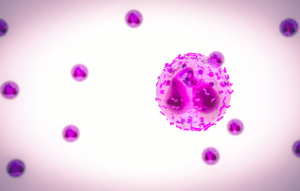Electromagnetic fields (EMFs) are a fundamental part of our natural environment, present in sources like the Earth’s magnetic field, solar radiation, and lightning. These natural EMFs have been with us for millennia, and living organisms have evolved to coexist with them. However, the EMFs we are now introducing into the world through modern technology are fundamentally different. Power lines, mobile phones, Wi-Fi, and household appliances emit man-made EMFs that are far more pervasive and varied than their natural counterparts.
As we continue to integrate technology into every aspect of our lives, it is our responsibility to understand how these man-made EMFs impact both human health and the environment. This blog will look into the critical differences between natural and man-made EMFs and emphasize the importance of being informed about their potential health effects. By recognizing these differences and understanding their implications, we can make better choices to protect ourselves and our planet.
Overview On EMFs
Electromagnetic fields (EMFs) are areas of energy that surround electronic devices. They occur naturally as well as from man-made sources. EMFs are generated by moving electrical charges and vary in frequency and intensity.
Natural EMFs
Natural EMFs are produced by sources such as the Earth’s magnetic field, solar radiation, and lightning. These EMFs are constant and relatively low in frequency, creating a stable background that all living organisms have adapted to over millions of years.

- Earth’s Magnetic Field: Provides a protective shield against solar and cosmic radiation.
- Solar Radiation: A natural source of EMFs, essential for life on Earth.
- Lightning: Produces short bursts of EMFs that are part of the natural electromagnetic environment.
Man-Made EMFs
In contrast, man-made EMFs come from a wide range of modern technologies and devices. These EMFs are often higher in frequency and intensity, and their presence is far more variable than natural EMFs.
- Power Lines: Emit low-frequency EMFs that surround our homes and workplaces.
- Mobile Phones: Produce higher-frequency EMFs, especially during calls and data transmission.
- Wi-Fi: Constantly emits EMFs to provide wireless internet connectivity.
- Household Appliances: Everyday items like microwaves, refrigerators, and even hairdryers contribute to our EMF exposure.
Differences Between Man-Made and Natural EMFs
One of the most significant differences between natural and man-made EMFs lies in their frequency and intensity. Natural EMFs tend to be low in frequency and relatively stable. For example, the Earth’s magnetic field has a frequency close to 0 Hz, and solar radiation falls within a predictable spectrum.
In contrast, man-made EMFs can span a wide range of frequencies, many of which are significantly higher than those found in nature. The intensity of these fields can also be much greater, especially when generated by high-power devices like mobile phone towers and microwave ovens.
phone towers and microwave ovens.
- Natural EMFs:
- Frequency: Low and stable (e.g., Earth’s magnetic field at ~0 Hz)
- Intensity: Generally weak and constant
- Man-Made EMFs:
- Frequency: High and variable (e.g., mobile phones at GHz frequencies)
- Intensity: Can be strong and fluctuating
These differences in frequency and intensity are critical because they determine how EMFs interact with biological tissues. Higher frequencies and intensities can lead to more significant biological effects, raising concerns about the potential health risks of prolonged exposure to man-made EMFs.
Exposure Patterns
Another crucial difference is the pattern of exposure. Natural EMFs are part of a consistent and predictable environment that organisms have evolved with over time. In contrast, man-made EMFs create a constantly changing landscape of electromagnetic exposure.
This variability in exposure patterns can disrupt biological systems that are accustomed to the stability of natural EMFs. The intermittent and often high-intensity exposure to man-made EMFs can potentially lead to acute and chronic health issues, making it essential to understand and mitigate these exposures.
Biological Impact
While both natural and man-made EMFs interact with living organisms, the biological impact of man-made EMFs is often more pronounced due to their higher frequency, greater intensity, and unpredictable exposure patterns. Research has shown that man-made EMFs can penetrate tissues more deeply and can cause cellular stress, potentially leading to some serious health issues.
- Natural EMFs: Generally have mild biological effects that organisms are adapted to
- Man-Made EMFs: Can cause more significant biological disruptions, including oxidative stress and DNA damage
Recognizing these differences underscores the importance of managing and studying our exposure to man-made EMFs. By understanding how they differ from natural EMFs, we can better assess their potential health risks and take appropriate actions to protect ourselves and the environment.
Health Concerns Associated with Man-Made EMFs
A growing body of scientific research has been dedicated to understanding the health impacts of man-made EMFs. While there is still ongoing debate and investigation, several studies have identified potential health risks associated with prolonged exposure to these fields. This research suggests that man-made EMFs can affect biological systems in ways that natural EMFs do not.
Key Findings from Research
- Cellular Stress: Man-made EMFs can induce oxidative stress in cells, leading to damage and dysfunction.
- DNA Damage: Exposure to high-frequency EMFs has been linked to potential DNA damage, raising concerns about cancer risk.
- Neurological Effects: Studies have shown correlations between EMF exposure and neurological disorders, including headaches, sleep disturbances, and cognitive impairments.
@captain_taylor_morgan Non-native electromagnetic fields (EMFs) refer to artificial sources of EMFs that are not naturally occurring in the environment. Here are some negative effects of non-native EMFs on human health: 1. Increased Risk of Cancer: Studies show a link between long-term exposure to non-native EMFs and an increased risk of certain types of cancer, such as leukemia and brain tumors. 2. Disruption of Sleep Patterns: Non-native EMFs, particularly those emitted by electronic devices like smartphones and Wi-Fi routers, are associated with sleep disturbances. Exposure to these EMFs before bedtime interfere with the production of melatonin, a hormone that regulates sleep, leading to difficulties falling asleep or disrupted sleep patterns. 3. Impact on Fertility: Studies indicate that non-native EMFs have a negative impact on fertility. Prolonged exposure to EMFs from sources like laptops, cell phones, and wireless devices reduce sperm quality, motility, and viability. 4. Neurological Effects: There is evidence that non-native EMFs may have neurological effects, including increased risk of neurodegenerative diseases like Alzheimer’s and Parkinson’s. 5. Electromagnetic Hypersensitivity (EHS): Some individuals experience symptoms such as headaches, fatigue, and dizziness when exposed to non-native EMFs. That’s why I use AiresTech (https://airestech.com/pages/taylor-morgan) Use code CAPTAINMORGAN to protect yourself from EMFs wherever you go. Together, when we reduce oxidative stress, we will #MakeThrivingStandard #LiveTheCaptainsLifestyle - #emfprotection #electromagneticfield #holistichealth #holistichealing #holisticliving #holisticlifestyle #biohacking #biohacker #oxidativestress
♬ Paris - Else
Potential Health Effects
The potential health effects of man-made EMFs can be both short-term and long-term, affecting various systems in the body. Understanding these effects is crucial for assessing the risks and implementing protective measures.
Short-term Effects:
- Headaches and Fatigue: Commonly reported symptoms include headaches, fatigue, and general discomfort, often associated with exposure to EMFs from mobile phones and Wi-Fi.
- Sleep Disturbances: EMFs can disrupt sleep patterns, leading to insomnia and other sleep-related issues.

Long-term Effects:
- Cancer Risk: There is ongoing research into the potential link between EMF exposure and an increased risk of certain cancers, particularly brain tumors.
- Neurological Disorders: Long-term exposure has been associated with a higher risk of neurological conditions, such as Alzheimer’s disease and other cognitive impairments.
- Fertility Issues: EMFs have been shown to affect reproductive health, with potentially serious impacts on fertility and fetal development.
Vulnerable Populations
Certain populations are more vulnerable to the effects of man-made EMFs, making it especially important to consider their exposure and implement protective measures.
- Children: Children are more susceptible to EMFs due to their developing nervous systems and thinner skulls, which can absorb more radiation.
- Pregnant Women: Exposure to EMFs during pregnancy can potentially affect fetal development and result in adverse birth outcomes.
- Individuals with Pre-existing Health Conditions: Those with conditions such as electromagnetic hypersensitivity (EHS) may experience more severe symptoms when exposed to EMFs.
Understanding the health concerns associated with man-made EMFs emphasizes the need for increased awareness and proactive measures as we continue to weave these devices into our environment. By recognizing these risks, we can take steps to better protect ourselves and be more mindful of our effect on the complexity that is the modern world.
Mechanisms of EMF Impact on the Body
Both natural and man-made EMFs can interact with cells and tissues, but the mechanisms and outcomes can vary significantly.
- Cellular Interaction: EMFs can penetrate biological tissues and affect cellular functions. Man-made EMFs, due to their higher frequency and intensity, can have more pronounced effects.
- Oxidative Stress: Exposure to high levels of man-made EMFs can lead to the production of reactive oxygen species (ROS), causing oxidative stress. This can damage cells, proteins, and DNA.
- DNA Damage: Studies have shown that man-made EMFs can cause breaks in DNA strands, which can lead to mutations and potentially cancer.

Comparison with Natural EMFs
The body’s response to natural EMFs is generally more adaptive and less harmful due to their consistent and low-frequency nature. In contrast, man-made EMFs can disrupt biological processes in ways that natural EMFs do not.
Natural EMFs
- Stable and Predictable: The body is adapted to these EMFs and generally does not exhibit adverse reactions.
- Low Intensity: Their low intensity means they are less likely to cause cellular damage.
Man-Made EMFs
- Variable and High Intensity: The unpredictable nature and higher intensity of these EMFs can lead to greater biological disruption.
- Potential for Harm: The higher frequency and intensity of man-made EMFs make them more likely to cause oxidative stress, DNA damage, and other adverse health effects.
Understanding these mechanisms highlights why it is essential to distinguish between natural and man-made EMFs. The significant differences in how they interact with the body point us to the fact there is a potential for health risks associated with the increasing prevalence of man-made EMFs in our environment.
Mitigation and Protection Strategies
Reducing Exposure
Minimizing exposure to man-made EMFs is the #1 step towards safeguarding your health from exposure. Here are some effective strategies to reduce EMF exposure in daily life:
- Limit Use of Wireless Devices: Use wired connections for internet and phones whenever possible. Reduce the time spent on mobile phones and keep them away from your body when not in use.
- Create EMF-Free Zones: Designate areas in your home, like bedrooms, as EMF-free zones. Remove or turn off electronic devices in these areas, especially during sleep.
- Optimize Device Placement: Place Wi-Fi routers and other EMF-emitting devices away from high-traffic areas and where people spend the most time.
- Use Airplane Mode: Enable airplane mode on mobile devices when not actively using them, especially while sleeping.
EMF Protection Devices
Various devices are available to help reduce exposure to EMFs. These devices can be integrated into daily routines to provide additional protection.
- EMF Shields: Products designed to block or reduce EMF exposure from electronic devices, such as clothing, bags, and bed canopies.
- Grounding Devices: Tools that help ground the body to the Earth’s natural EMFs, reducing the impact of man-made EMFs. These are typically things like grounding mats.
- Wearable EMF Protection: Jewelry or accessories infused with materials that claim to neutralize EMFs.
Aires Tech

The most notable company we’ve seen offering EMF protection devices is Aires Tech. Their products are designed to mitigate the effects of man-made EMFs on the body. This company develops scientifically-backed products aimed at reducing harmful EMF exposure.
Their technology focuses on transforming harmful EMF radiation into biologically compatible forms. Aires Tech devices use microprocessors to essentially harmonize EMF radiation, thereby reducing its impact on biological systems. These devices can be either worn, kept nearby, or easily attached to mobile phones, laptops, and other electronic devices, providing a convenient solution for daily use.
Several studies and a growing base of customer testimonials support the effectiveness of Aires Tech products, highlighting their ability to reduce symptoms associated with EMF exposure, such as headaches and sleep disturbances.
Policy and Regulation
In addition to individual actions, advocating for better policies and regulations can help manage EMF exposure on a larger scale as we move forward. Reviewing the existing guidelines on EMF exposure set by health organizations and government bodies can help in understanding the current regulatory landscape, which, in our opinion as well as many others, is outdated. Encouraging stricter regulations and more comprehensive research on the health effects of EMFs can lead us to more effective protections. Furthermore, promoting public awareness about the potential health risks of EMF exposure and the importance of protective measures is essential for fostering informed and proactive communities.
Final Thoughts
As we navigate an increasingly electrified world, it is essential to understand the differences between natural and man-made EMFs and their potential impacts on our health and the environment. Natural EMFs, which are low in frequency and intensity, have been a part of our ecosystem for millennia, and living organisms have evolved to coexist with them. However, the rise of man-made EMFs from modern technology introduces new variables with higher frequencies and intensities, leading to potential health risks that we are only beginning to understand.
Scientific research highlights the importance of addressing these risks, showing that man-made EMFs can cause oxidative stress, DNA damage, and various health issues, particularly for vulnerable populations like children and pregnant women. By understanding the biological interactions and mechanisms of EMF impact, we can better appreciate the necessity of mitigating our exposure.
Reducing our exposure through practical steps such as limiting wireless device use, creating EMF-free zones, and using protective devices like those offered by Aires Tech can significantly safeguard our health.
Also, we need to come together to advocate for stricter regulations, more comprehensive research, and better public awareness so that we can begin to manage EMF exposure on a global scale. By being informed and proactive, we can fulfill our responsibility to understand and mitigate the impacts of man-made EMFs, ensuring a healthier future for ourselves and the planet we call home.









